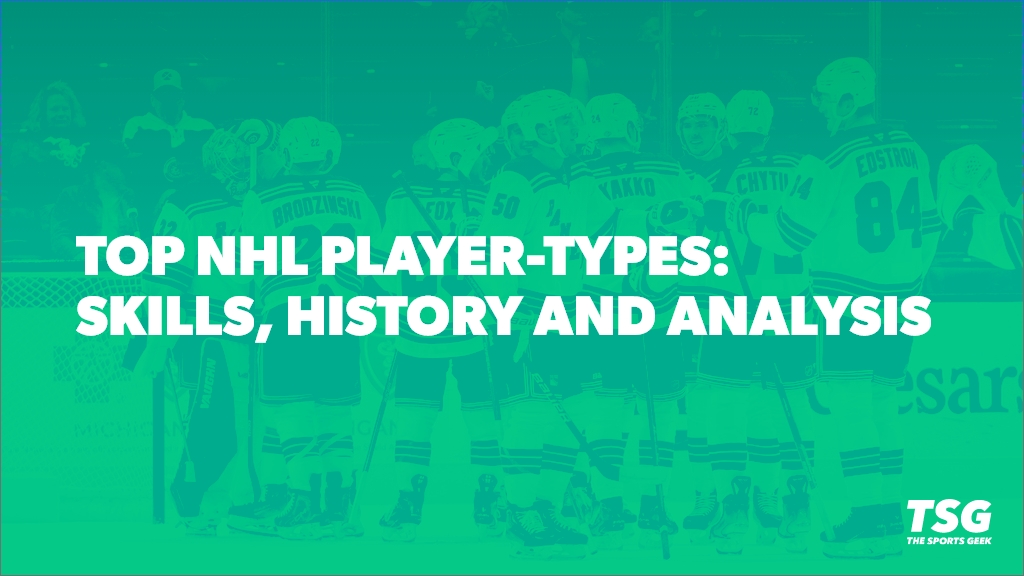
What NHL archetypes are there? We examined the history of hockey to figure out the different types of NHL players and what they bring to the table.
There are a variety of different responsibilities and styles that players undertake to make the team as efficient as possible. Let’s delve into the most common archetypes and NHL players of all time that best represent each skill set!
Enforcer
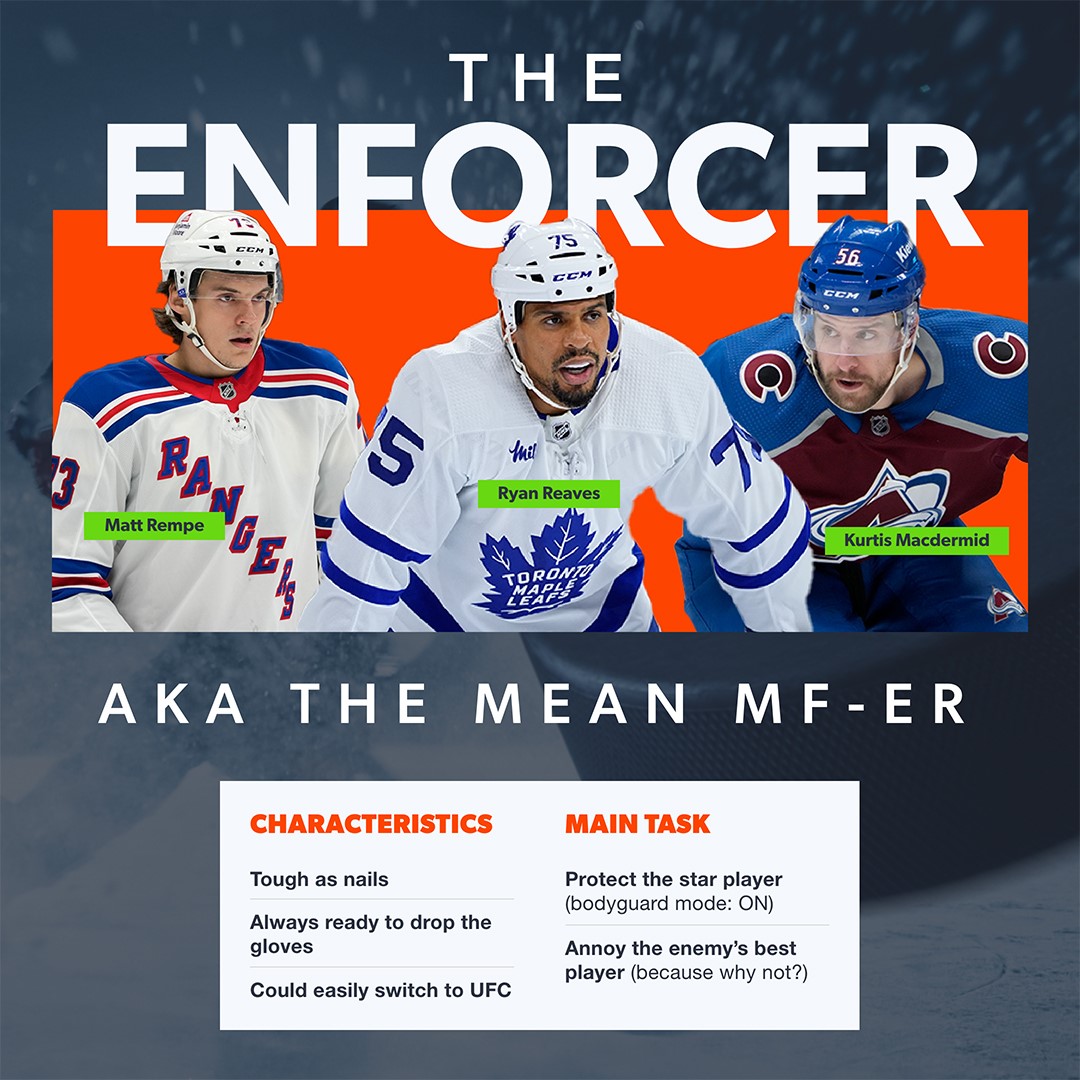
Although the hockey enforcer role has dissipated over the last decade, there is still a place for them on NHL teams. Enforcers are primarily responsible for protecting the star players on the roster. They are tough, physical, and not scared to drop the gloves and fight on moment’s notice!
Typically, enforcers are large in stature, but this isn’t always the case. As an outlier, Tie Domi was only 5’10” and roughly 200 pounds and still held his own.
However, as a general rule, enforcers are big, strong, and finish their body checks. They are not known for purely hockey qualities, but there are rare exceptions.
Due to player safety and concussion education, fighting has been reduced considerably in the NHL. As a result, the enforcer archetype has been on the way out over the last decade.
There are still some enforcers, though, including the Maple Leafs’ Ryan Reaves, Rangers’ Matt Rempe, and Devils’ Kurtis MacDermid.
Sniper
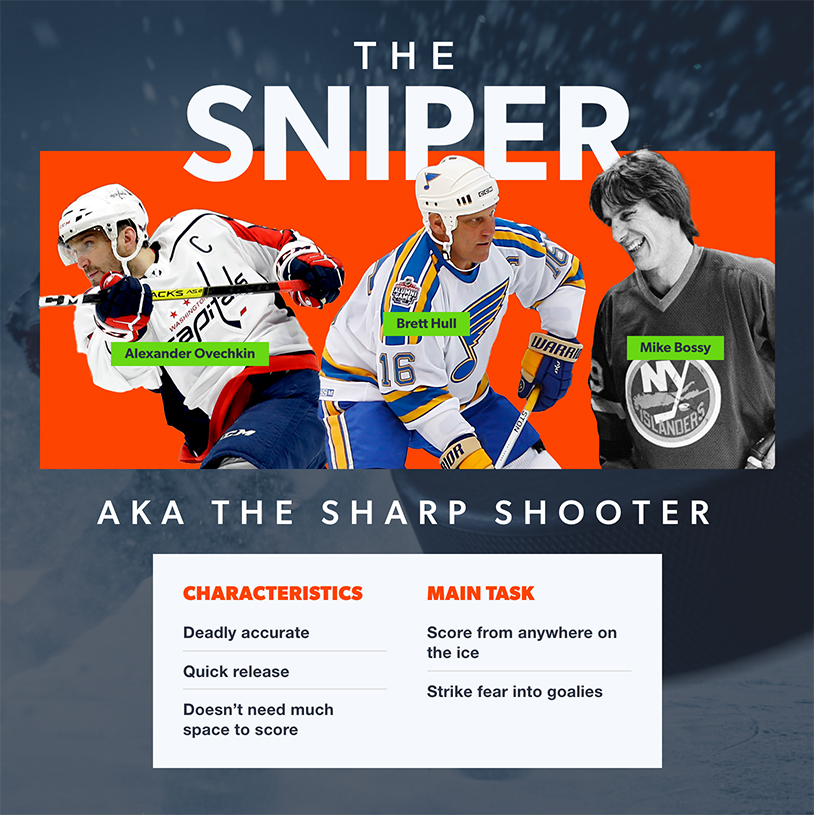
Snipers, also regarded as proficient goal scorers, are the most dangerous offensive players on the ice. Whether it’s a slap shot or quick release with a wrist shot, snipers always have a chance to score when the puck touches their tape.
They are usually the high-scoring players on most teams. There are all-around, elite hockey players capable of doing it all. However, they aren’t quite known for being pure scorers like this group.
Similar to a sharpshooter in the NBA, snipers can score from anywhere on the ice. They are incredibly accurate shooters who put fear into any goaltender in the NHL! One current player is among the best snipers in NHL history.
We often feature the best snipers in the league in our free NHL player props, as they are deadly on the ice.
Playmaker
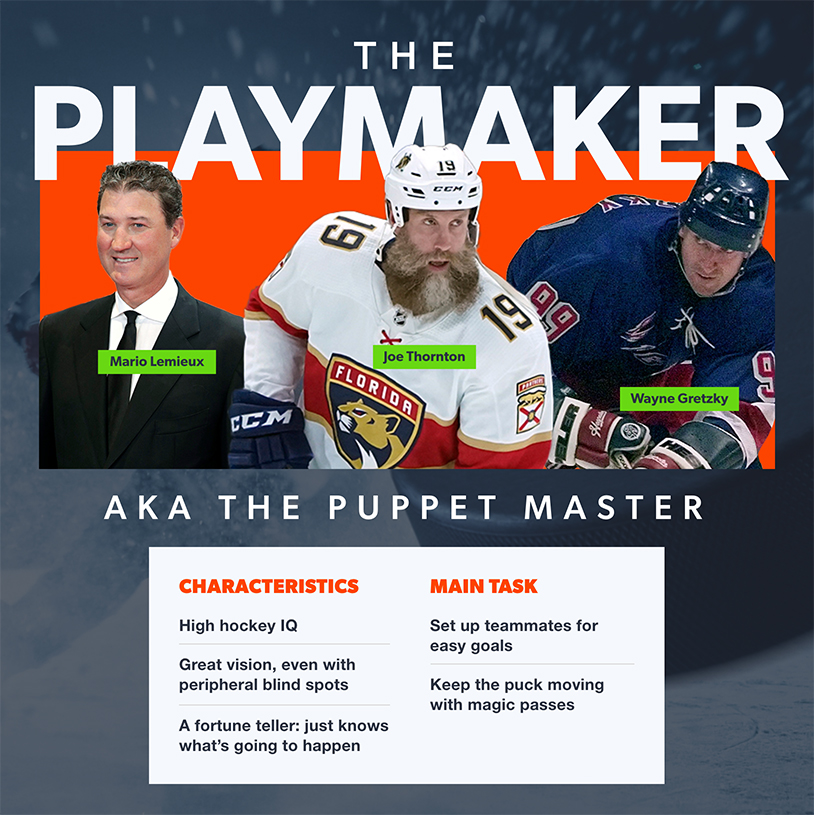
Playmakers are regarded as the most important component of the offense. While they are expected to score goals, playmakers also have the responsibility of setting up plays and keeping the puck moving.
Snipers aren’t inherently the best passers on the team, but playmakers must have a keen ability to find their teammates. Additionally, playmakers have an uncanny ability to predict things on the ice before they happen. The hockey IQ of playmakers is tops in the league.
Being a playmaker requires unrivaled skating and puck-handling skills on the ice. Everything put together, it’s a rare talent that only the elite players can reach during their careers. Every team needs a playmaker or two to compete for the Stanley Cup.
Offensive Defenseman
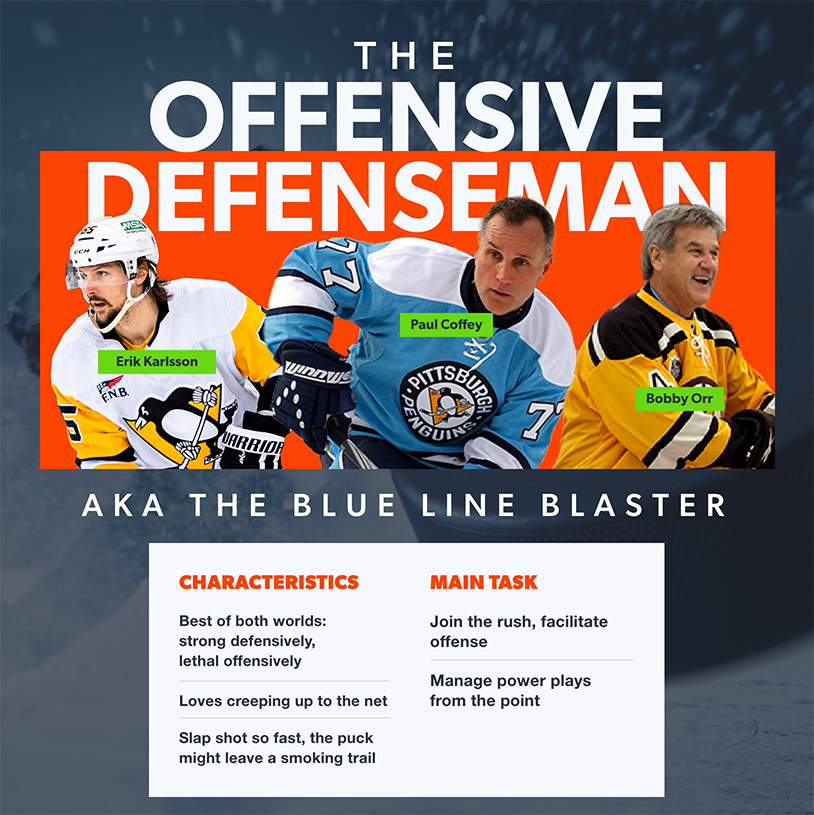
Defensemen are the last line of defense on the ice before the goaltender. They are assigned to clear the puck out of the defensive zone to open up the offense. However, there are select defensemen who love to jump in the rush or have a knack for being playmakers on the blue line.
It’s a difficult task to ask of defensemen, but some players go above the call of duty and are excellent offensive facilitators. Offensive defensemen require a strong and accurate shot to have success. Most of their goals come from the top of the point, so a great shot is a requirement.
Also, knowing when to shoot or pass is an important trait. Defensemen are expected to be superior passers. They tend to work the puck around in the offensive zone, but defensemen with an offensive sense know when to creep up and take more chances close to the crease.
Lockdown Defenseman
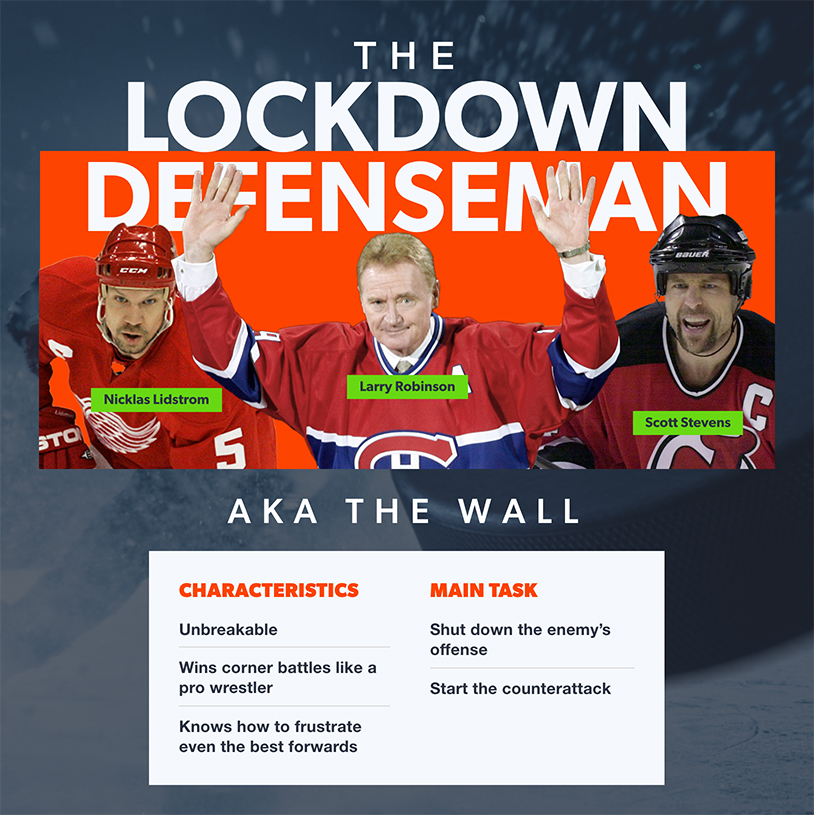
The lockdown defensemen NHL archetype are special players who don’t allow forwards to win battles often. They use a combination of physicality, stick skills, positioning, and intelligence to force takeaways to change the time of possession.
In addition to being a goaltender’s best friend in preventing goals, they are elite puck movers who can start counter rushes for their team. Winning battles in the corners and in front of the goal is paramount for lockdown defense in the NHL!
Two-Way Forward
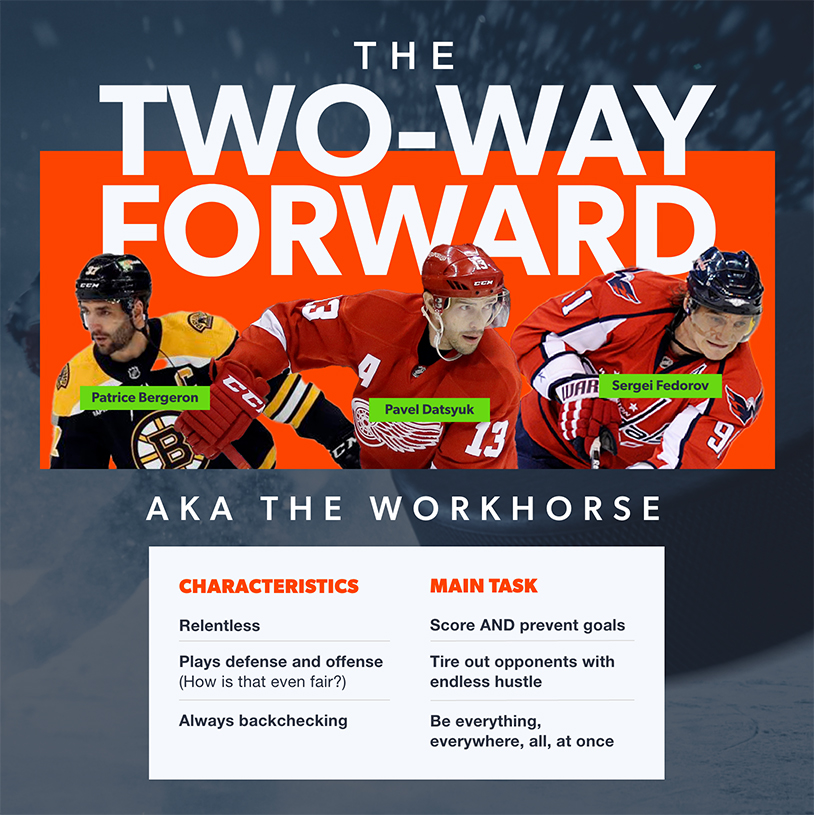
The best teams in the NHL have two-way forwards who can make plays on both ends of the ice. Two-way players are effective in the offensive zone, but they also play a big role defensively. They are elite forecheckers and then have the speed to get back and help defend against opposing forwards.
Players that fit into the two-way forward archetype can score, make plays, and then get back on defense. It requires incredible stamina and skill to be able to excel offensively to dominate forwards and create takeaways. The NHL introduced the Selke Trophy in 1977-78 to honor the top defensive forward of the year.
The recently retired Patrice Bergeron holds the record for the most Selke Trophy honors with six. However, two other forwards come in just ahead of Bergeron who best describes the two-way forward NHL archetype.
Power Forward
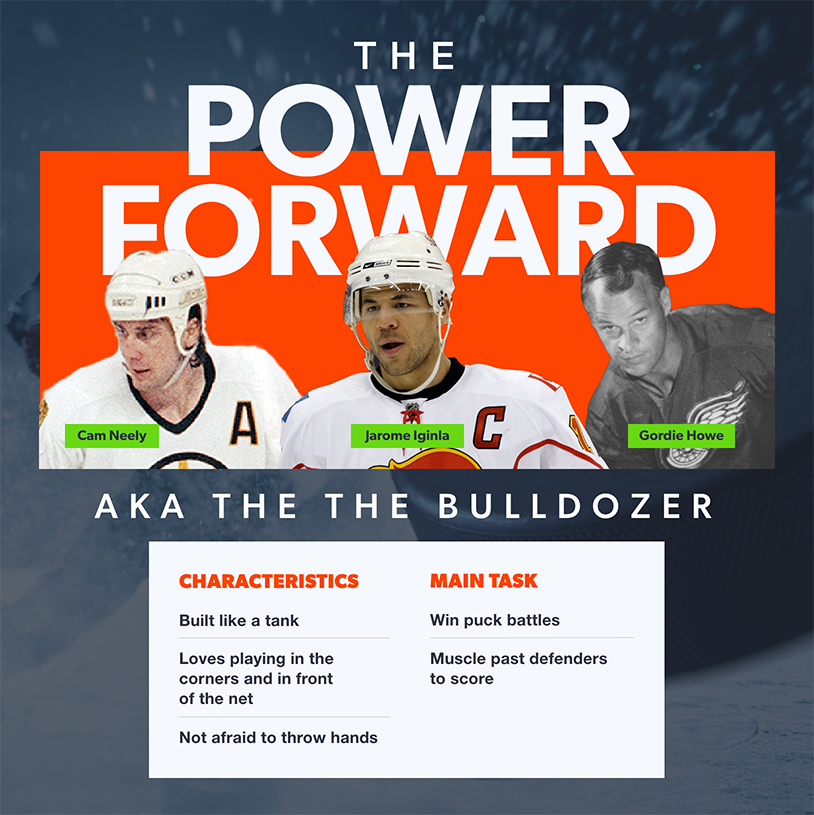
Although power forwards don’t have the versatility of two-way forwards, they are critical to teams in the offensive zone. They are tough as nails and as strong as an ox. Winning one-on-one battles and creating scoring chances is the name of the game for power forwards.
They have enforcer tendencies but are also well above-average offensive playmakers. Power forwards need to have a blend of strong forechecking skills, goalscoring around the crease, and not be scared to get physical.
Power forwards don’t search out fights like enforcers but are tough enough to strike fear into opponents interested in dropping the gloves. Above all else, however, power forwards are strong players who are a load for defensemen to handle in front of the crease and corners.
All-Around Elite Talent

There are only a handful of players who belong in this NHL archetype. This is reserved for the most elite athletes to ever play in the NHL. These are hockey players who can do whatever the head coach asks of them.
Whether they need to set up a goal, be a defensive force, or pure goal scorer, that’s all in a day’s work for an all-around player. Two players who are in a class of their own come to mind when you think about the most elite, all-around talents in NHL history.






You must be logged in to comment. Don't have an account? Sign up today.